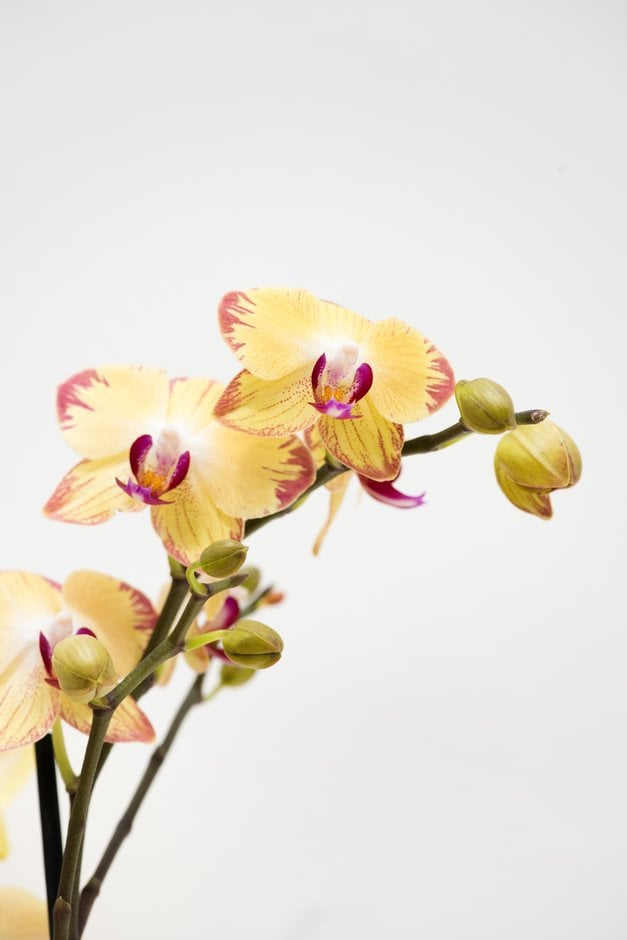Phalaenopsis Yellow Lightning gx
moth orchid Yellow Lightning gx
Evergreen, epiphytic orchids, with fleshy, broadly oval leaves and one or more arching stems bearing yellow flowers with feathered red edges and purple centres over a long period at any time of year
Size
Ultimate height
0.1–0.5 metresTime to ultimate height
2–5 yearsUltimate spread
0.1–0.5 metresGrowing conditions
Moisture
Well–drainedpH
Colour & scent
| Stem | Flower | Foliage | Fruit | |
| Spring | Purple Red Yellow | Green | ||
|---|---|---|---|---|
| Summer | Purple Red Yellow | Green | ||
| Autumn | Purple Red Yellow | Green | ||
| Winter | Purple Red Yellow | Green |
Position
- Partial shade
Aspect
West–facing or East–facing or North–facing
Exposure
Sheltered Hardiness
H1ABotanical details
- Family
- Orchidaceae
- Native to GB / Ireland
- No
- Foliage
- Evergreen
- Habit
- Columnar upright
- Genus
Phalaenopsis are a large genus of species and hybrid mainly epiphytic orchids. Short, upward growing, stem-like rhizomes with no pseudobulbs produce oval, fleshy mid to dark green leaves and flowers in branched racemes from the base of the leaves
- Name status
Unresolved
How to grow
Cultivation
Grow in open, bark-based, epiphytic orchid compost allowing the aerial roots to hang outside the container. Provide bright filtered light, good ventilation and, from spring to autumn, mist daily for high humidity. Water freely as compost dries out, allowing water to drain and apply an orchid fertiliser monthly. Provide a minimum day temperature of 17°C and night minimum of 15°C. See phalaenopsis cultivation
Propagation
Small plantlets (keiki) may appear from the nodes on the flower stems. Detach plantlets when they have developed several good roots and pot them up in orchid compost. Water sparingly at first, but mist them daily
Suggested planting locations and garden types
- Houseplants
- Conservatory and greenhouse
Pruning
No pruning required; cut back flowered stems to a lower node to encourage further flowers
Pests
May be susceptible to aphids, glasshouse red spider mite and mealybugs
Diseases
Generally disease-free
Get involved
The Royal Horticultural Society is the UK’s leading gardening charity. We aim to enrich everyone’s life through plants, and make the UK a greener and more beautiful place.
